Taking Flight: Pharm Exec's Top 50 Pharma Companies 2015
Pharmaceutical Executive
Specialty drug sales, record-breaking M&A paired with tax synergies, and global expansion helped to bring a new face into this year’s Pharma 50 top 10, and substantially boosted the rankings of several others.
Specialty drug sales, record-breaking M&A paired with tax synergies, and global expansion helped to bring a new face into this year’s Pharma 50 top 10, and substantially boosted the rankings of several others.
Led by the breakout success of its hepatitis C virus (HCV) franchise, Gilead Sciences recorded $24.5 billion in global revenues for 2014. Gilead’s rise into the top 10 list of biopharmaceutical companies, up from No. 18 in last year’s ranking, demonstrates the fast-track opportunity of specialty markets, especially in areas of high unmet medical need. The company’s announcement of its first quarterly cash dividend to stockholders, to be paid out beginning this month, is a clear sign of the growth Gilead has achieved as an organization.
Other climbers like Actavis, which jumped six places from 24 to 19 this year, have pursued an opportunistic growth platform with respect to M&A. Actavis completed its $66 billion acquisition of Allergan earlier this year, and intends to change its name as a result; look for Allergan rising to take a second new spot in the top 10, in next year’s Pharma 50.
By now, the big Pharma players have all established a presence and capability in emerging markets. While the pace of growth has slowed in some emerging markets like Brazil and China, AbbVie was able to maintain its ranking position, in the No. 10 slot this year, due to its commitment to expanding the global footprint of its key products.
Signs point to growth
Buoyed by an impressive 41 new medicines approved by FDA last year, the biopharmaceutical industry is increasingly optimistic about the potential for growth. Cutting edge science and technology proliferate across industry
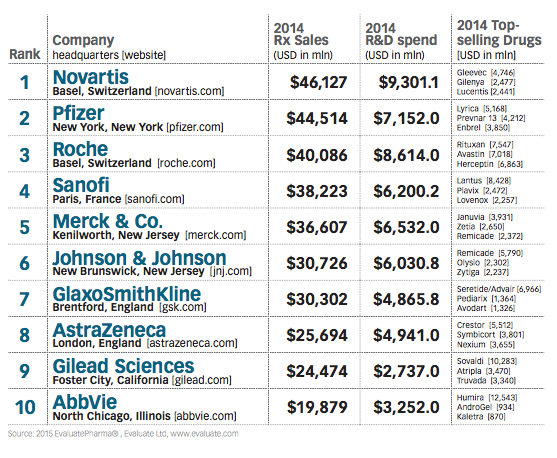
pipelines, just as more patients gain access to health coverage and drug benefits. According to PwC’s 18th annual global CEO survey, released earlier this year, 92% of pharmaceutical and life sciences CEOs expressed confidence about their prospects for revenue growth over the next three years. Underscoring that confidence, 58% of the CEOs surveyed said they expect to increase total headcount over the next 12 months.
“We are cautiously optimistic about the evolution of the global economy,” Joaquin Duato, worldwide chairman, pharmaceuticals, Johnson & Johnson, told PwC. “While emerging markets continue to be a very important driver of growth for us, the ability of the US, Japanese, and European economies to perform well will continue to be foundational to our growth.”
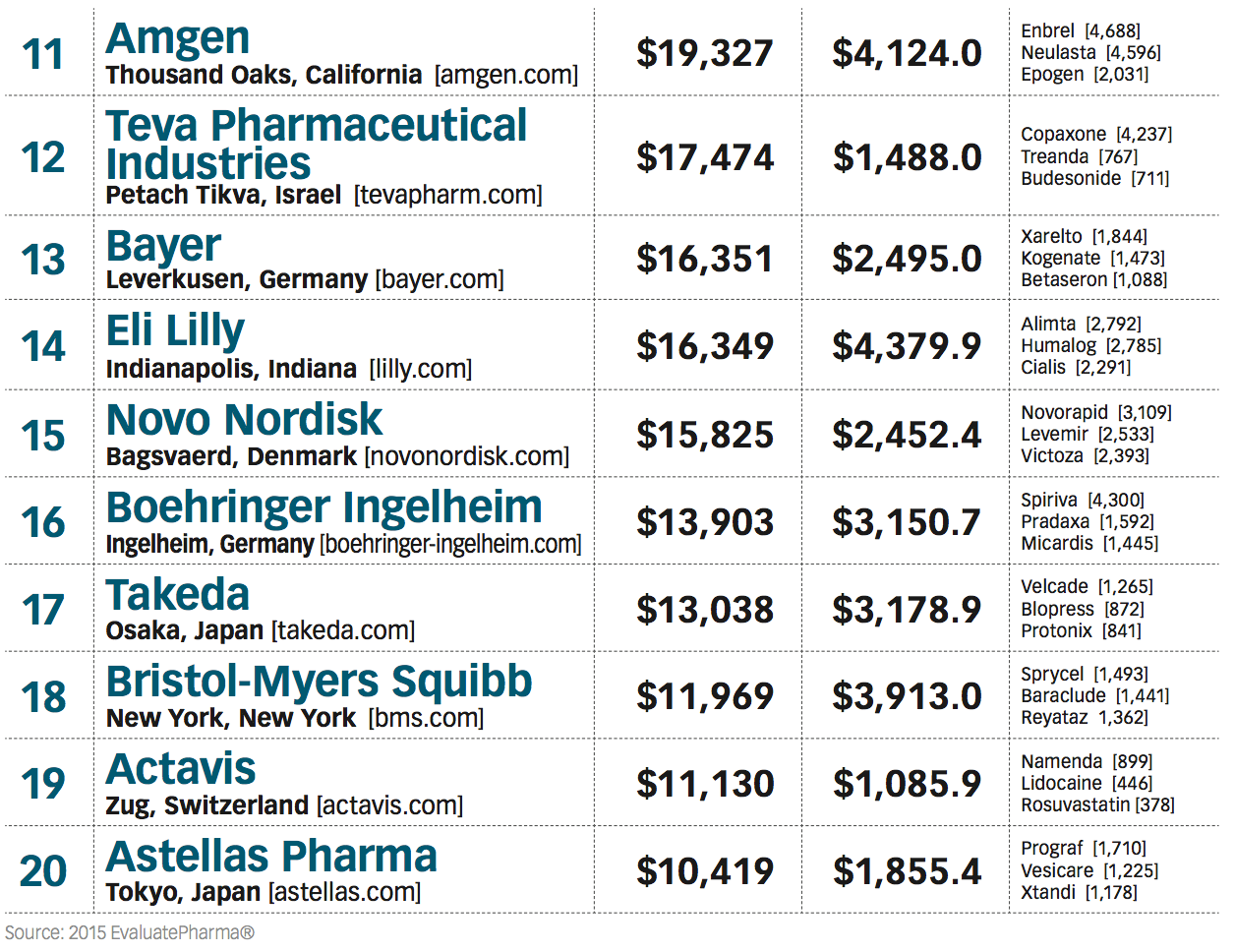
Macroeconomics aside, achieving consistent growth in the context of a high-risk R&D enterprise, and a commercial landscape that increasingly prioritizes lower-cost options, is no simple feat. Whether growth comes organically, through discovery, development, launch and lifecycle management functions, or inorganically through mergers, acquisitions, or licensing deals, a number of issues must be addressed in order to successfully manage growth, and ensure that it continues. Talent-that greatest of asset intangibles-sits at the top of the list.
Deals or DIY
Growth by nature requires change, and a keen ability to identify the new skills necessary to develop and support new business capabilities. Regardless of whether companies are on the hunt for acquisition targets, preparing for a new launch, expanding into new markets, or implementing a cost reduction initiative, any restructuring process can serve as an opportunity to realign talent and business activities.
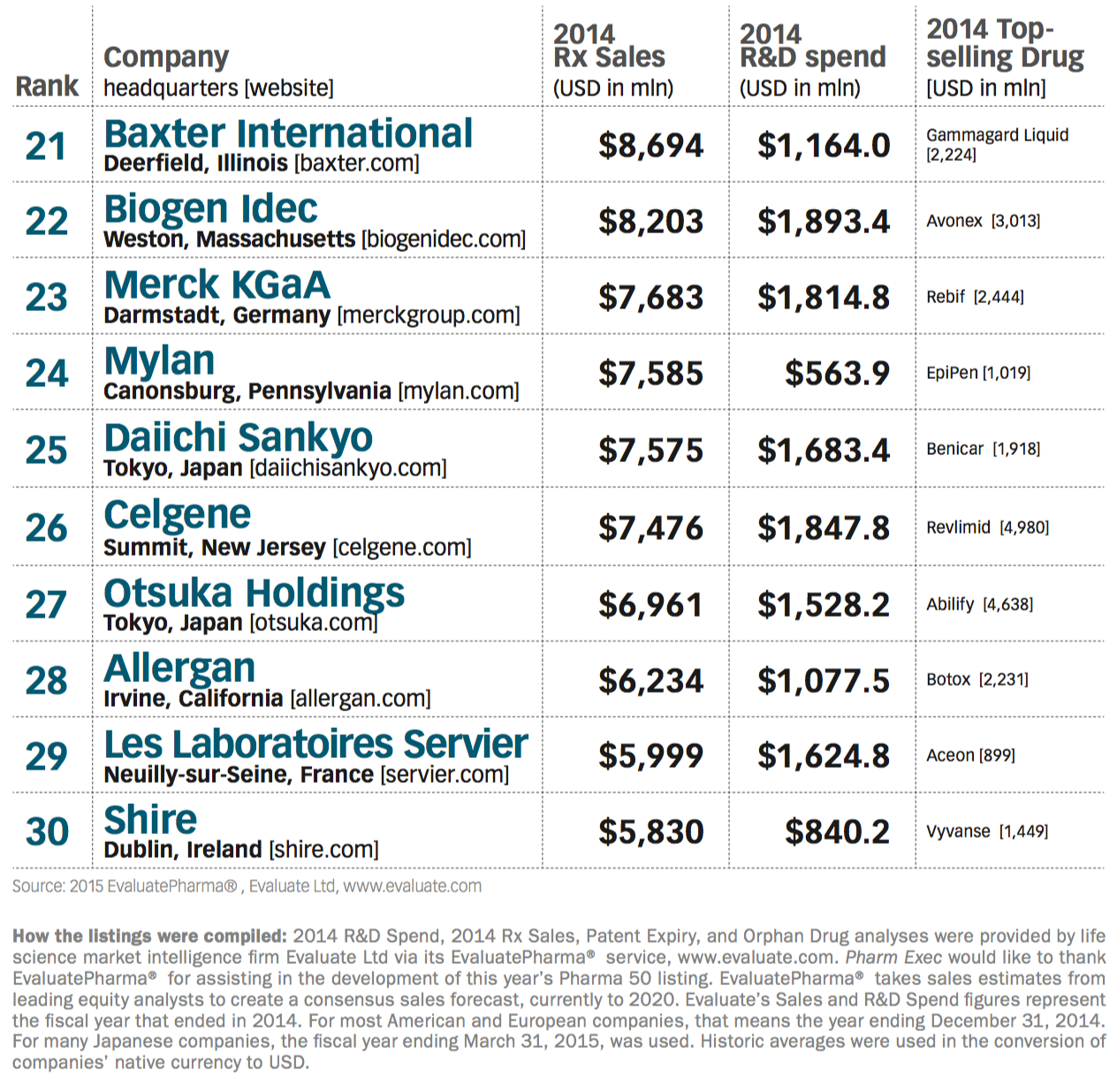
In the case of a merger or acquisition, the organizational muscle to get a deal done is critical in capturing early value. From a talent perspective, a strong business development and legal function is necessary to both identify targets and follow through with due diligence to strike a deal. Finance departments can provide a valuable assist in this process by making use of the proliferation of public data now available on competing organizations. Insight into the brand strength of an acquisition target, for example, can deliver an edge in the vetting process.
The quantity and pace of biopharmaceutical deals-despite Federal Reserve Chair Janet Yellen’s comment last month that stock values generally are “quite high”-seems likely to continue in the short to mid-term. Appropriate post-merger activity is determined by the type of integration struck: organizations must decide on full integration, or the degree of autonomy to which it will grant an acquired entity. That important decision will drive the degree of synergy that can be achieved.
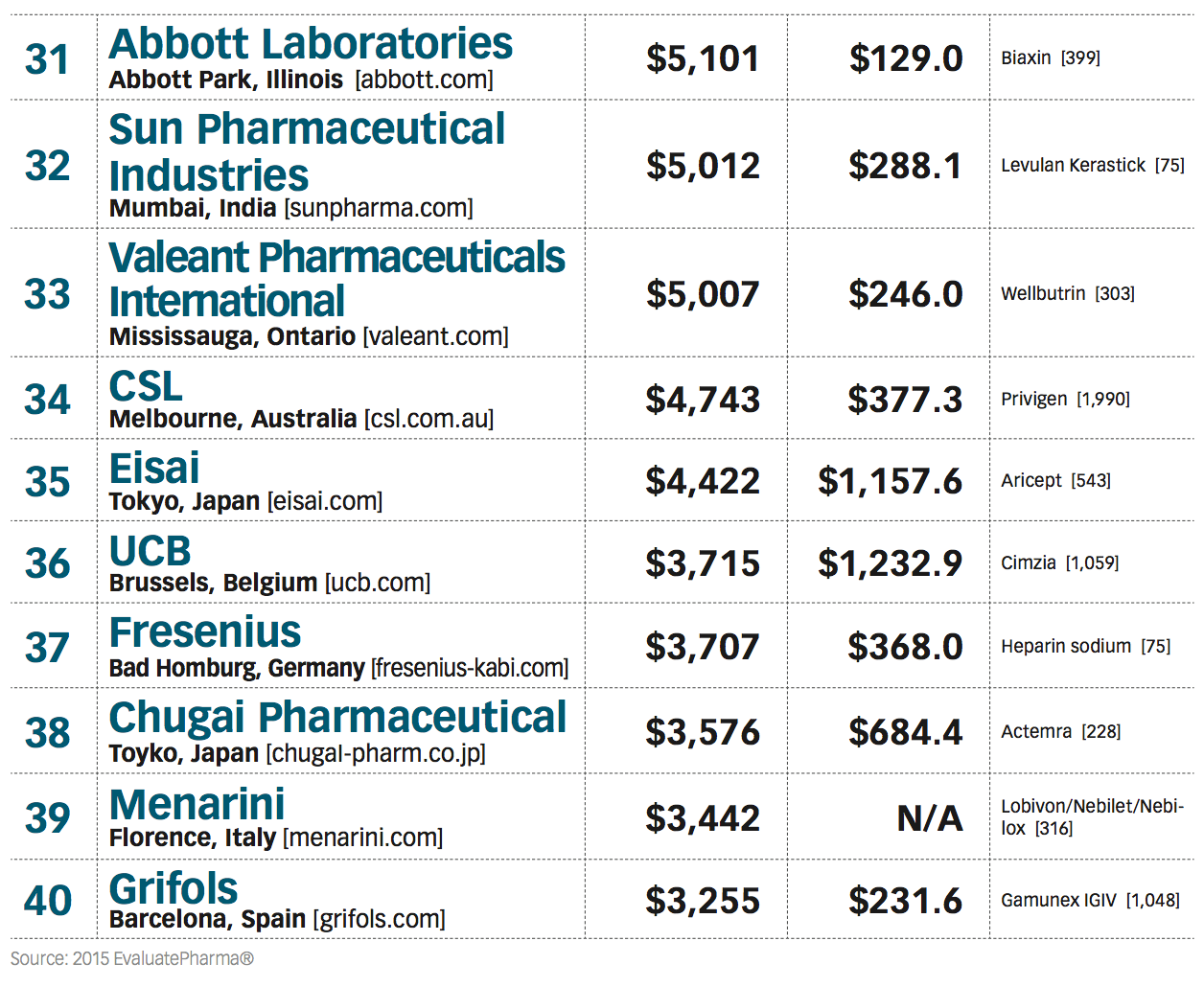
Once made, the first places to look for early value capture are the enabling corporate functions: efficiencies within HR, finance, IT, real estate, and the legal department. Second, are functions that support the value chain, including R&D, manufacturing and supply chain, and the commercial organization. Other groups at the intersection of these functions-like medical affairs and health economics and outcomes research-represent additional prospects for finding efficiencies and capturing value.
Just as there’s a need for an acquiring entity to have the organizational muscle to identify and close the deal on a target, similar strength and capabilities on the back end are needed to perform a successful integration. The success of an integration depends on setting up the entire organization for early value capture without business disruption, and doing it with a sense of purpose. Corporate culture is the North Star from which purpose shines, and the onus of enablement falls heavily to the HR function.
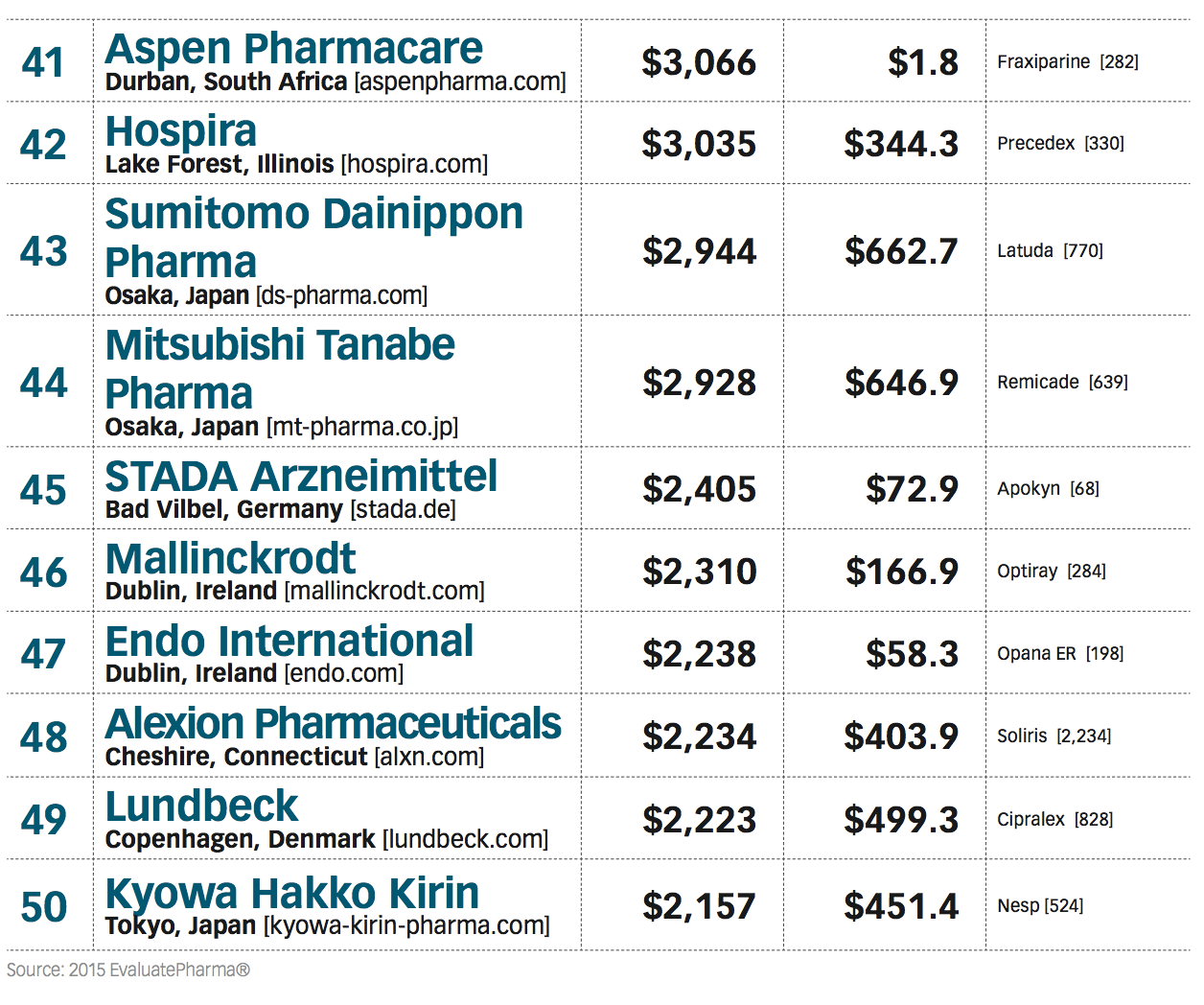
Not everyone is out in the night air looking to mix it up with a new mate. For companies pursuing organic growth, different but equally critical issues are intrinsic to a strong talent agenda. One is building a new capability in the commercial function; capability in terms of both commercial strategy and commercial operations. Market access strategy is replacing the narrow technical remit of the traditional pricing and reimbursement function. Capability building may include not just managed markets and other customer channels in the US, but also building the commercial capability across a global footprint and in both established and emerging markets.
The role of HR in this process is to be a true business partner in the marketplace: HR creates value when it is able to work with the commercial function to truly anticipate and articulate the capabilities needed to drive growth, and then to shape a compelling employer value proposition so that it can compete successfully. How an organization differentiates itself is crucial in a competitive talent market. HR can’t just be a benefit menu or a mouthpiece for issuing orders.
Talent type
So what kind of talent is the right kind of talent? Critically, talent with a value add. Ninety percent of the pharmaceutical and life sciences CEOs surveyed by PwC said they look for a much broader range of skills when hiring that they did in the past (see chart below). That’s nearly 10% higher than the collective response to the same question from CEOs representing all other industries.
Diversity matters, too. Of the CEOs surveyed, 64% reported having a strategy in place to
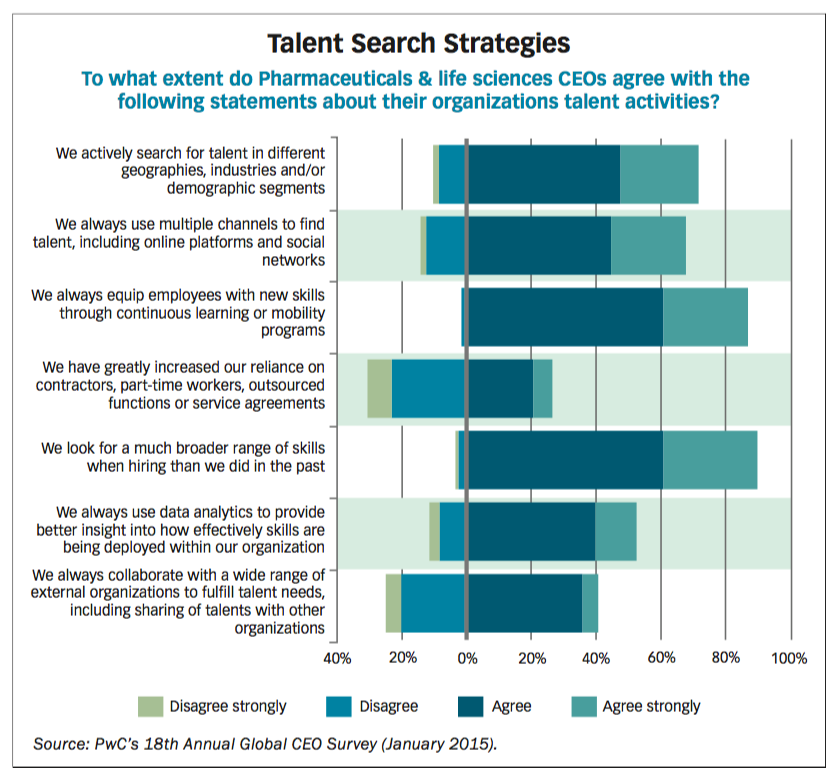
promote talent diversity and inclusiveness. Another 12% said they plan to adopt such a strategy. Asked about the positive business impact of a talent diversity strategy, six areas were cited by over 80% of CEO respondents. A diverse workforce helped companies: collaborate internally and externally; innovate; strengthen brand and reputation; enhance business performance; enhance customer satisfaction; and finally, attract new talent. Diversity also means geographic diversity.
The nod to collaboration is important. Increasingly, organizations need to go beyond the purely transactional execution of a partner contract, whether it’s contract research, contract manufacturing or contract sales. Internal roles that intersect with contracted services need finely-honed vendor management and relationship management capabilities. The latter is becoming a premium. By necessity, vendor management is in part managing the terms of a contract, but the move to managing the relationship and the ecosystem in which the vendor operates can elevate the conversation to one of shared value. Over time, the most rewarding interface is the relationship interface, because it promotes a sense of true investment in mutual success.
There is room to improve. Research conducted by PwC’s Health Research Institute (HRI) found that next to government-sponsored research, contract research organizations (CROs) are the most common type of partnership at pharmaceutical and medical device companies surveyed. In fact, outsourcing has grown to such an extent that it now encompasses over 40% of drug discovery and development spending. And yet, deeper relationships are not pervasive. HRI research found that 38% of the organizations surveyed characterize their partnership with a CRO as highly integrated and strategic, while 47% describe the relationship as being at arm’s length. These results suggest that some companies still see CROs as low-cost vendors for limited services. Companies may be missing a broader opportunity that comes from a full strategic alignment.
Beyond CROs and other traditional vendors, biopharmaceutical companies are beginning to partner more often across traditional lines to address the shift toward patient outcomes as the measure of product value. Developing a shared understanding of risk to reward-in partnering with health insurers, health systems, patient advocacy groups or technology firms-requires strong relationship management talent, and the ability to forge a consensus between sometimes competing incentive structures.
For organizations operating in emerging markets, the talent strategy is the single determinant of whether strategic goals will be successfully achieved. In China, for example, there is such an aggressive talent market that the issue becomes keeping up with the pace in order to get people in the door-and keep them-within the commercial function. In Southeast Asia particularly, the No. 1 inhibitor in achieving a growth target is acquiring and retaining the right caliber talent.
More than words
Organizational culture is often both invisible and literally written on the wall. Companies able to bring their culture to life throughout the organization are successful in establishing a link between the business purpose and values, business strategy, and the behaviors that drive performance. Leaders in this area are drilling down from culture as defined by statements of mission, purpose and values to identify specific business activities that drive value creation. Further, these organizations are able to define the behaviors they need employees to exhibit in order to deliver on those activities, and to reinforce those behaviors through sanctions and rewards within the performance management system.
By doing that, the culture comes alive; it becomes the way of working. Reinforcement mechanisms establish recognition or reward for working in a certain way, or sanctions for doing otherwise. An example can be something as simple as in-the-moment feedback about performance, to acknowledge desired behavior or let an employee know that a behavior needs modification. Team-based in addition to individual rewards can also ensure that individuals are not only performing in their roles, but are contributing to their teams, business units, and company at large.
Many organizations stop short of taking the culture to this level of granularity. Anyone who’s walked a corporate office or manufacturing site has seen the posters and mission statements. But employees aren’t necessarily living the values, because there are no mechanisms to reinforce those values. Leadership must prove in a tangible way, on a day-to-day basis, that culture matters. If it doesn’t matter at the top, it won’t matter much anywhere else, either.
The entrance of millennials into the workforce represents a unique opportunity to boost the culture guiding an organization by tying those principles to a performance management system, including non-financial rewards. Money still talks, of course, but millennials in particular tend to look for something instead of or in addition to money. As PwC US chairman and senior partner Bob Moritz wrote in the Harvard Business Review last November, millennials respond to rewards that will benefit them in life- or career-enhancing ways, such as eligibility for a sabbatical to pursue an interest, travel, volunteer, or stay at home with family.
Keep growing
Once merely slow dance partners, pharma and biotech are increasingly joined at the hip, if they aren’t already housed under one roof. From a business perspective, it’s a perfect match: commercial and regulatory networks and expertise, in exchange for bleeding edge science and life-changing, even curative, new therapies. The great thing about science is that it doesn’t discriminate; brilliant minds of all kinds continue to be switched on by the math and mystery of biology or bioinformatics, and the desire to do something positive on a grand scale. However, many employees working in biopharmaceuticals over the past several years have endured layoffs, corporate integrity agreements, and leadership churn. Going forward, companies must anticipate the new skills needed to compete, involve HR in strategic planning and organization design, and be willing to invest in talent, financially and otherwise. An organization is only as strong as the people who show up to work every day.
Michael Swanick, partner, is the global pharmaceuticals and life sciences leader at PwC. He can be reached at michael.f.swanick@us.pwc.com. David Hole, managing director, is leader of the pharmaceuticals and life sciences people and change practice at PwC, and cross-sector lead for HR transformation. He can be reached at david.hole@us.pwc.com. Ben Comer is senior manager at PwC’s Health Research Institute. He can be reached at benjamin.comer@us.pwc.com.

Regeneron, Roche Launch Major US Expansion Plans to Meet Growing Demand for Biologics and Innovation
April 22nd 2025With combined investments exceeding $53 billion, both companies are deepening their US presence through expanded biologics production, gene therapy capabilities, and next generation R&D centers.
The Misinformation Maze: Navigating Public Health in the Digital Age
March 11th 2025Jennifer Butler, chief commercial officer of Pleio, discusses misinformation's threat to public health, where patients are turning for trustworthy health information, the industry's pivot to peer-to-patient strategies to educate patients, and more.
Navigating Distrust: Pharma in the Age of Social Media
February 18th 2025Ian Baer, Founder and CEO of Sooth, discusses how the growing distrust in social media will impact industry marketing strategies and the relationships between pharmaceutical companies and the patients they aim to serve. He also explains dark social, how to combat misinformation, closing the trust gap, and more.